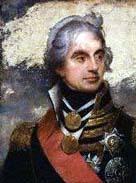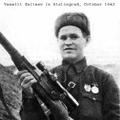
This is coolbert:
It seems that the idea to use large-bore [16"] naval guns as a part of an anti-ballistic missile [ABM] system was originally conceived by
Dr. Jerry Bull in the early 1960's. This was an offshoot of the HARP project [High Altitude Research Project].
HARP researched the possibilities of launching into space of satellites, via a rocket-assisted-projectile [RAP] sabot [sabot - - " 3. A lightweight carrier in which a projectile of a smaller caliber is centered so as to permit firing the projectile within a larger-caliber weapon. The carrier fills the bore of the weapon from which the projectile is fired; it is normally discarded a short distance from the muzzle.] round called the
Martlet. The Martlet would be fired from a 16" naval gun at such velocity and trajectory that it would into orbit around the earth, all the while trailing satellites as it orbited. Read further about the Martlet by clicking
here. A quick, cheap, and relatively fool proof method of launching satellites. [It should be noted that in the late 1950's and early 1960's, missiles used to launch satellites into orbit around the earth were just in their infancy. Many failures, expensive and embarrassing, occurred from errant missile launchings]. The 16" naval gun firing a Martlet, if effective, offered
an alternative to missile launched satellites.
And some success
WAS achieved with the HARP project. Conventional naval gun shells were fired to a vertical altitude of
100 miles and a down range distance of 600 miles!! Keep in mind that the Paris Gun [Wilhelmgeshutze] from World War One was able to fire an artillery shell to an altitude of 50 miles!! HARP did far better and was pushing the envelope in a marked way toward orbiting a Martlet!!
Bull's concept for the 16" naval gun to be used as an ABM system was to fire a conventional shell into the path of an incoming enemy ballistic missile warhead. Exploding into something like forty five hundred [4500] fragments, a shrapnel "cloud" would be created in outer space. A "cloud" placing a "wall" of steel fragments in the path of the incoming enemy warhead. A warhead would have pass through this "cloud", the impact between the warhead and any of the many shrapnel fragments creating stupendous kinetic energies, destroying the warhead instantly. Bull
DID have a team of grad students do calculations with regard to this ABM system, Bull telling the human calculators that, "this was a system of protecting the earth from meteorites".
A number of
objections were raised at the time with regard to the 16" naval gun ABM system. These included:
Radars and computers of the time were just not accurate and fast enough to provide proper weapons guidance for the 16" naval gun.
A 16" naval gun ABM system could
NOT deal with hundreds of simultaneous incoming enemy missile warheads. [such an attack would have occurred if a nuclear exchange between the U.S. and the Soviet Union took place].
It took a
TRAINED gun crew ninety minutes to load and fire one round from the 16" naval gun. This was way, way too slow.
The HARP project being subsequently discontinued without orbiting a Martlet, Dr. Bull's amazing and innovative ABM system using 16" naval guns never came to fruition. In all probability, missiles were just more "sexier". That was what politicians and the military wanted to see, expensive and "sexy" missiles used for an ABM system,
NOT big-bore naval guns. It should be noted however, that further research into the concept of naval guns being used for missile defense was continued for some time after the HARP project was cancelled, using 5" naval guns at the Wallops Island missile test range as part of a scaled down ABM system. Evidently some in the military felt that Bull's idea had merit and
DID deserve further research. Research that DID continue!! Read about HARP and further similar research projects by clicking
here.
[During the Presidency of Ronald Reagan, the Strategic Defense Initiative [SDI] was proposed.
SDI was conceived as a
space-based ABM system. A system that would render known existing offensive missiles of hostile nations impotent.
One segment of SDI was called
"Brilliant Pebbles". Orbiting missiles of small size would look
DOWNWARD at the earth with onboard sensors and watch for ballistic missiles launchings from hostile nations. These "Brilliant Pebbles" would fire their motors, and guide themselves to impact with the hostile missile, destroying same. These "Brilliant Pebbles" were often referred to as "kinetic energy weapons". Such was the advancement even at the time with sensors to detect missile launch that it was said that
each square foot of the surface of the earth would have a
minimum of ten "Brilliant Pebbles" sensors constantly looking at it!!! There was even a system for SDI proposed that involved what was called a "rail gun". A device that used magnetic attraction to accelerate an ABM interceptor to phenomenal velocity, that interceptor being steered to collide with the hostile missile or warhead, destroying same by "kinetic energy"].
It has been over forty years now since Dr. Bull conceived his big-bore naval gun ABM system. Perhaps this system needs to be looked at again, modern radars, computers, and artillery projectiles being what they are. A modern version of Bull's ABM system
COULD work!! Such a system could be called, somewhat erroneously,
"Dumb Pebbles".
Even to this day, the "sexiest" missile used as an ABM interceptor
does not seem to work. Many tests have been done, without the desired results.
Perhaps, using modern technology, "Dumb Pebbles" offers a quick, dirty, and effective alternative to the various ABM missile systems that have been proposed [or are being built, as we speak].
Modern technology does seem to overcome the drawbacks to the gun based ABM system as proposed by Dr. Bull.
A number of advancements make this possible. These advancements would include:
Modern radars and computers are just light-years ahead of the technology that existed in the early 1960's!!
It may not be necessary to have an ABM system that can successfully engage and destroy
hundreds of incoming hostile warheads. A more likely scenario is that the gun based ABM system would have to deal with a small, limited number of incoming warheads, from say, such rogue nations as North Korea or Iran!!
It should also be possible to overcome the ninety minutes for a trained crew to fire the 16" gun by having a RAP sabot round constantly loaded, modern propellants being loaded to fire the RAP just prior to initiating engagement!!
I see such a "Dumb Pebbles" ABM system consisting of the following:
Early warning [EW] radars of the Cobra Dane or Cobra Judy [shipbased] variety.
DO NOT preclude spaced-based radars as well!!
Very fast trajectory calculating computers [centralized/decentralized] crunching data from the EW radars. These computers evaluate possible targets, and issue instructions to the firing batteries.
A centralized/decentralized
communications system tying together the EW radars, computers, and firing batteries in an integrated system that also possesses autonomous capability.
Firing batteries consisting of two to three turrets, each turret mounting
three 16" naval guns. The exact number of firing batteries to be determined. Each firing battery also possessing it's own independent radars and computer guidance system, with a capability for a master/slave relationship to exist between various turrets within a battery or firing batteries.
An improved
RAP sabot round to be fired from the 16" naval gun. This RAP sabot [steerable??] would carry a large number [number to be determined] of bomblets. Each bomblet containing hundreds or thousands of steel ball bearings.
I see a
firing sequence of this ABM system proceeding as follows: [this sequence for the most part would be automated].
1. A combination of ground based and space based sensors detect hostile missile launch. A trajectory and impact point for the hostile missile is quickly determined.
2. The appropriate battery or batteries are notified to initiate firing sequence. Propellants are loaded, guns are made ready and given initial aiming instructions.
3. Firing battery or batteries turn on their target acquisition radar [TA] and fire control radar [FC], attempting to locate incoming hostile missile/warhead.
4. TA radar gives the firing battery final aiming instructions.
5. Battery fires.
6. RAP sabot ascends.
7. RAP sabot receives steering instructions from FC radar.
8. RAP sabot detonates at appropriate altitude, releasing bomblets.
9. Bomblets continue to ascend in a ballistic arc.
10. Bomblets detonate, creating a spew of steel ball bearings. This forms a steel "cloud" in the direct path of the hostile missile/warhead.
11. Hostile missile/warhead passes through "cloud", impacts with ball bearing spew and is destroyed.
Seems so simple, doesn't it??
And there is unending variation as to how many guns are firing from how many turrets from how many batteries. One gun from one turret may fire. Or a turret can ripple fire RAP sabot, one round detonating at altitude, one round on the way, and one ready to fire. Or a turret or turrets or entire batteries could fire salvos or multiple salvos simultaneously. One battery in that case would be the master, issuing aiming and firing directions to another battery or batteries for multiple coverage of the same hostile missile/warhead.
Do I ever expect to see such an ABM system installed, in place and working. Ever??
NO!! But it does make for interesting speculation, does it not??!!
[how readily available would be those barrels for the 16" naval guns? Well, I am not sure. It seems that in the early 1960's, hundreds of these barrels existed in mothballs, a legacy of World War Two [WW2]. At the time, a nation's technological expertise could be measured to a degree by it's ability to manufacture these large naval guns. These barrels could not have been cheap??
NOT to be easily discarded. Do they still exist in mothballs?? I am not sure. That would make for an interesting question. Having the barrels available quickly would expedite the fielding of such a gun ABM system].
coolbert.
.



















